Lets view the electric field coupling from a wall wire or a simple extension corde, into the biopotential wire.
We will use the parallel_plate model of capacitance, because of the presence of myriad other wires and PCBs that absorb energy also. This makes fields non_dipole, letting the parallel_plate equation become rather useful
Assume the wires are 1 meter long, 1 milliMeter diameter (now we have the AREA), and have a Distance between them of 1 meter.
The parallel_plate capacitance is
- C_parallel_plate = E0 * Er * Area/Distance
which becomes
Now assume a clean sineusoid at 60Hz, 160 volts peak.
(spikes from fluorescent lightes, light_dimmers, or motors will greatly worsen this)
The induced current will be
I_displace = C * dV/dT == 1e-14 farad * (377 radian/second * 160volts)
I_displace = 1e-14 * 60,000 volt/second (assuming CLEAN power line)
I_displace = 6 * 1e-14 * 1e+4 = 6e-10 ~~ 1 nanoAmp
and the voltage across 100,000 ohms is 1e-9 * 1e+5 = 100 microVolts
And you need to avoid voltages of the 100 microvolt level.
============================================
In a floating wire, the voltage ---- which you CANNOT monitor with a scope probe -----will be defined by the TWO SERIES CAPACITORS.
If the biopotential_wire is halfway between the 60Hz power wiring and a ground system (a mess of wires, that are not moving very much in voltage), then your biopotential_wire will have 160 volts peak / 2, or 80 volts on it.
But you cannot monitor that voltage, because you greatly change the voltage division ratio.
More practically, suppose you DO monitor a long wire, one meter from the 60Hz power wiring.
We'd expect the scope (10:1 probe, 10 pF || 10MegOhms) to show?
Ignoring the 10,000,000 ohms, its just a capacitive divider
- 0.01pF / 10pF = 1,000:1 division, thus 160 milliVolts on your scope.
What is effect of the 10,000,000 ohms inside the probe?
It is a High Pass Filter, because 10,000,000 is constantly removing charge.
The 3dB frequency will be at 10pF || 10Meg ohm, or 100 uS time constant, which is 1,600 Hertz corner frequency.
The previous answer of 0.16 volts will be smaller by 60/1,600.
